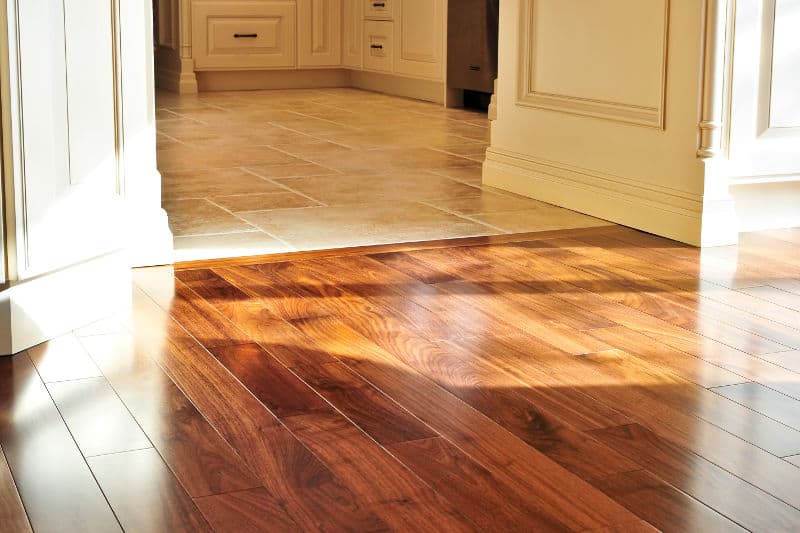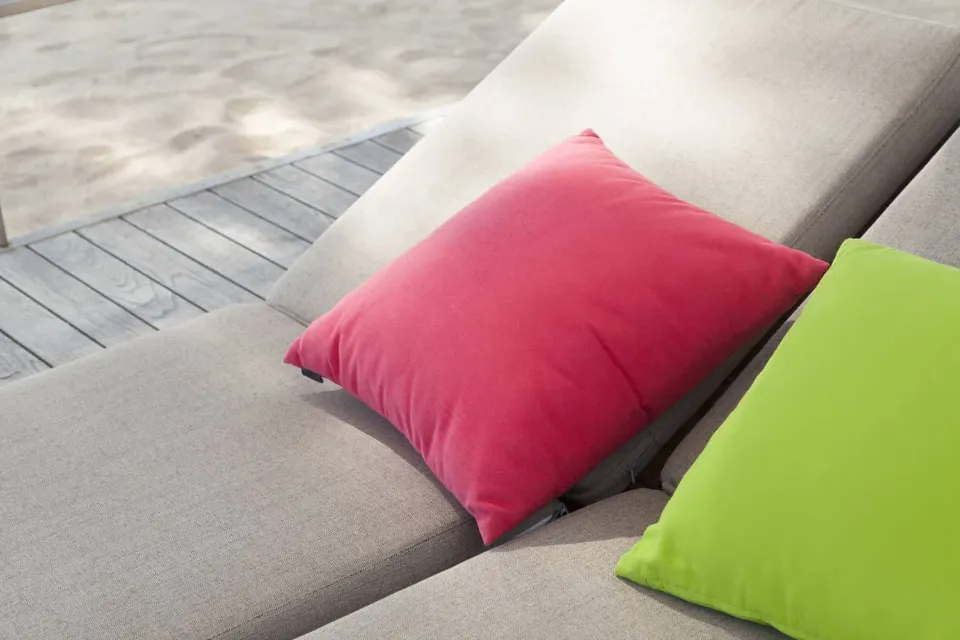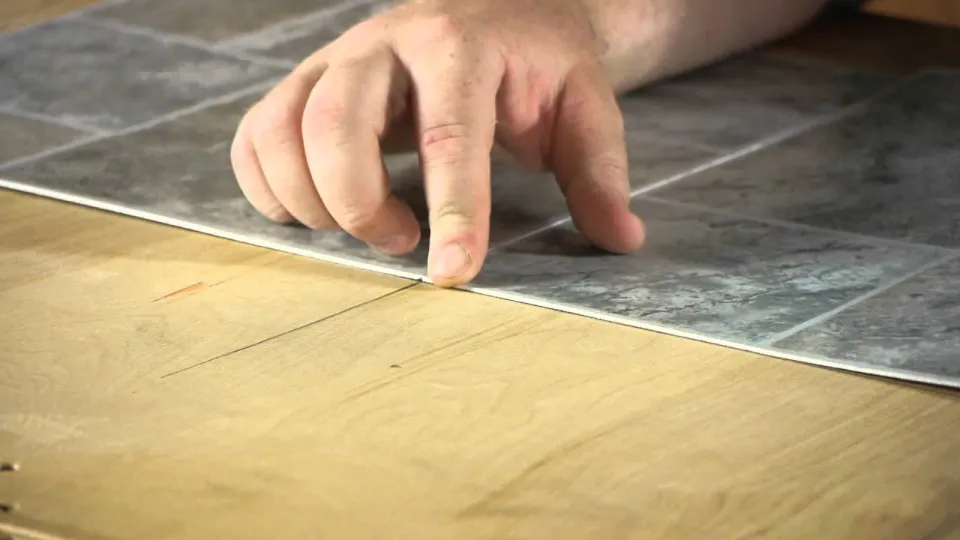Types of flooring you can put over ceramic tile includes ceramic tiles, laminate flooring, vinyl flooring, carpet, epoxy coating, cork flooring, wood flooring, and new fired tile. But, why choose these floorings? Below will give specific reasons.
There are several types of flooring that you can install directly over your unsightly old tile if you are tired of looking at dated ceramic tile but lack the time (or money) to remove your old flooring.
Let’s read on.
Why Shouldn’t I Remove the Existing Ceramic Tile Myself?
Ceramic tile removal is a very challenging task. It is firmly embedded in thin set mortar (made of cement), so when it is removed, it may shatter and break into razor-sharp fragments that could easily sever skin.
It’s a difficult, labor-intensive process that is expensive to outsource, and hammering into the tile can also release clouds of dust and broken pieces into the air. This is why many homeowners choose to merely lay down new flooring on top of their ceramic tile.
What Type Of Flooring Can You Put Over Ceramic Tile?
Below are the details:
Ceramic Tiles
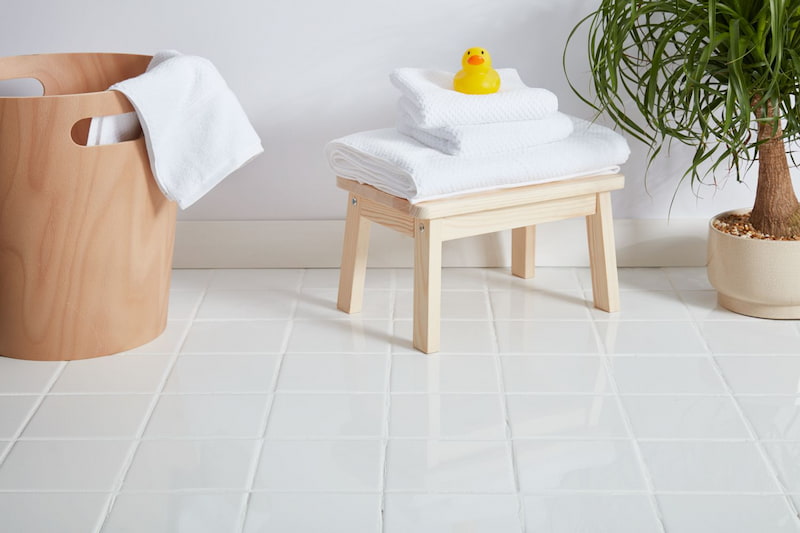
Yes, you can lay new ceramic tiles on top of fresh ones. Just make sure the old tiles are evenly spaced and without cracks.
Sand the old tiles to make room for the new ones to adhere and set properly before adding the second layer. For the new tiles to sit evenly, you may occasionally level a patch.
Before installing new tiles, you should also look for mildew and significant discoloration. Any indication of an absorption problem could become worse if you cover fresh tiles.
Laminate Flooring
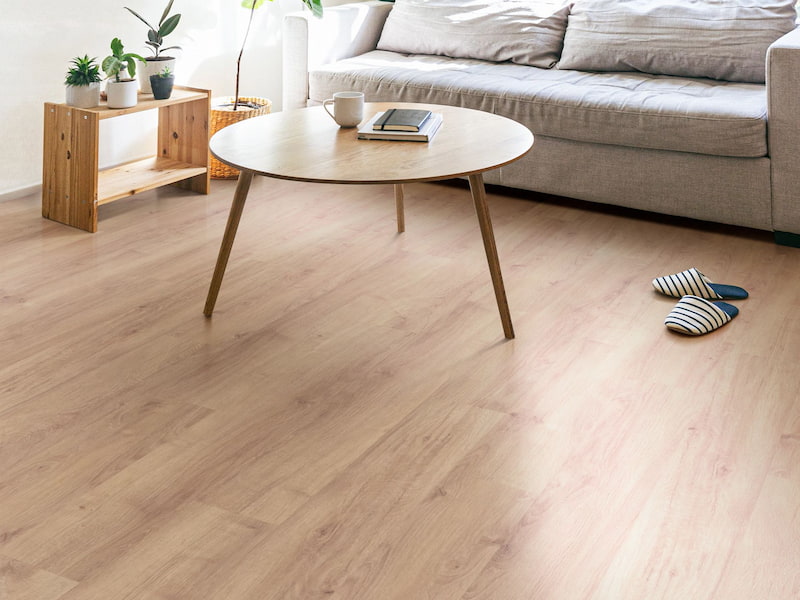
Laminate flooring is an excellent alternative to ceramic tiles if money is tight. They are available in many different designs and hues.
Some even have a wood-like appearance. If you’re looking to give your house some warmth, this is a great option.
Due to the lack of adhesive required, laminate flooring can be installed quickly and simply. If you don’t have the time or energy to install new tiles, this flooring option is perfect for you.
But there is one problem with this kind of flooring. Its top layer gradually loses its brightness. When exposed to too much moisture, it also has a tendency to fall apart.
Vinyl Flooring
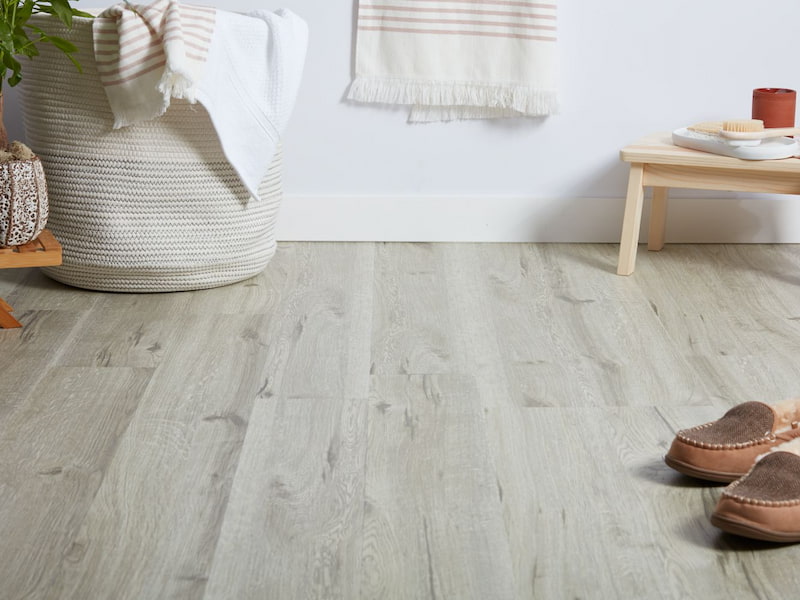
Vinyl flooring is a practical, attractive, and simple to install flooring option. Self-adhesive, interlocking vinyl floor tiles, and peel-and-stick vinyl installation techniques are a few examples.
You can simply lay down your old floor over the ceramic tile if the top is smooth and clean.
Also low maintenance are vinyl floor tiles. Water-resistant vinyl tiles with resemblant hardwood and granite patterns are available.
However, vinyl flooring deteriorates over time when left in the sun. Therefore, it is not advised for outdoor use or for spaces that receive a lot of sunlight.
Carpet
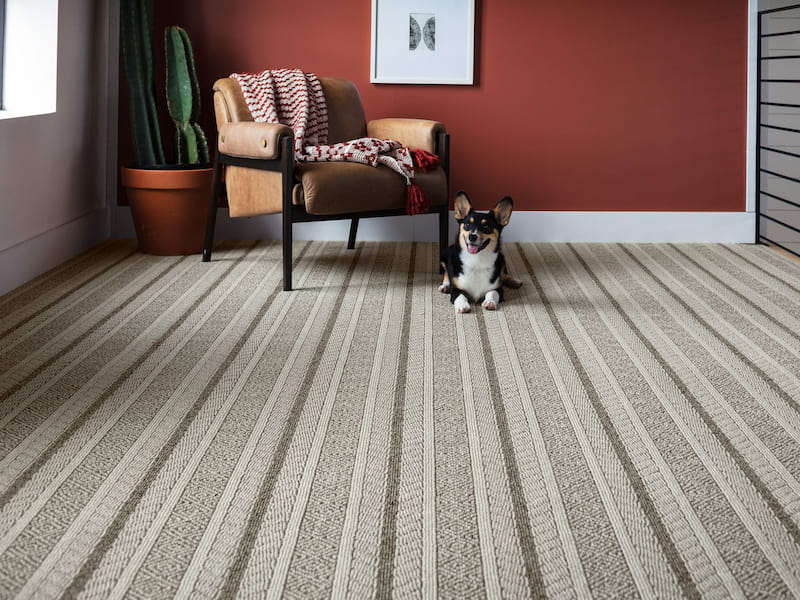
If you want new flooring installed over ceramic tile, carpet is another simple and affordable option. Before installation, look for any broken tiles or hollow sounds when tapping the tiles.
The tiles are probably coming off, as evidenced by that. Prior to replacing the damaged tiles, you must reattach them.
You can still feel the hard, cold surface when a carpet is laid over ceramic tiles, which presents one difficulty. So, whenever possible, choose thicker carpets because they are softer.
The use of carpet flooring with a 10mm or greater thickness is advised. It will even out any uneven surfaces below in addition to blocking out the cold. More carpet varieties, along with advantages and disadvantages, are shown here.
Epoxy Coating
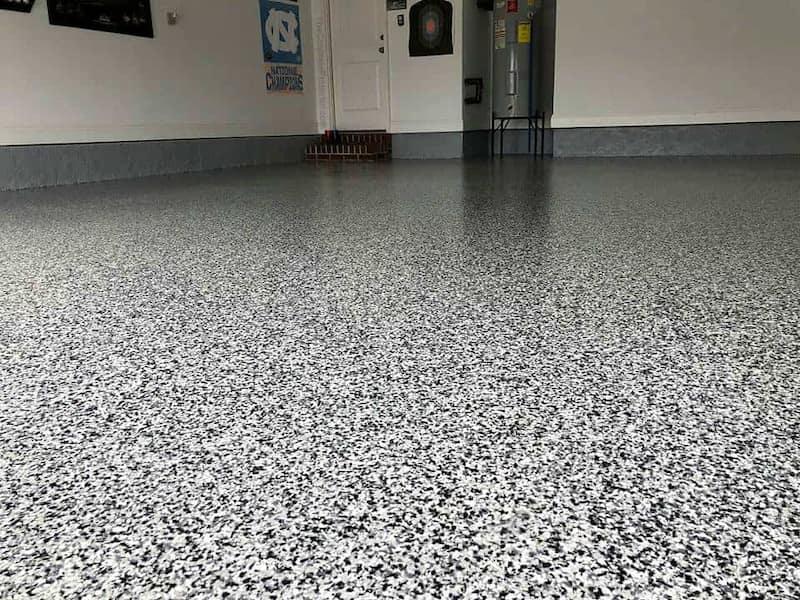
On ceramic tiles, epoxy coating application seems impossible. Although it is a cheap and simple option, you can use it.
Just keep in mind that epoxy coating bonds well to uneven surfaces. The surface of glazed ceramic tiles must therefore be ground rough.
Additionally, make sure the grout lines are spotless and free of oil stains. They may cause problems both during and after installation if left unattended.
Cork Flooring
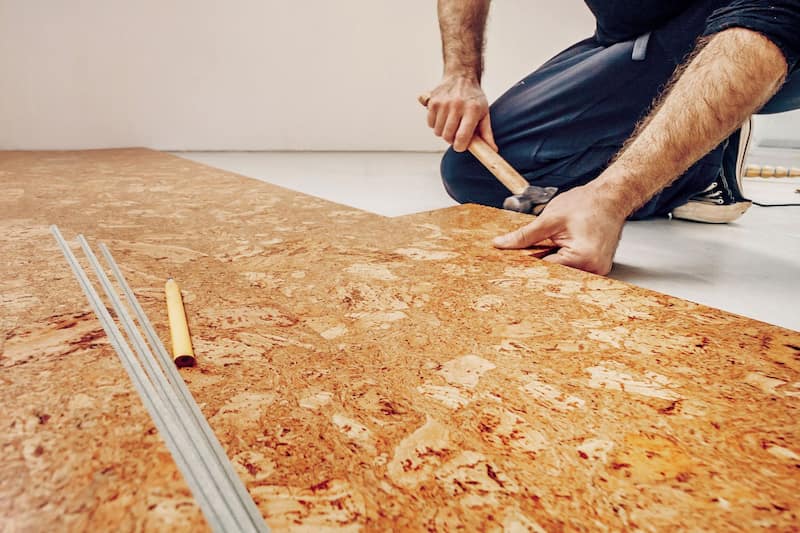
Ceramic tiles can also be covered with cork flooring. It works well in rooms like the kitchen or bathroom where water is most likely to be spilled.
Water cannot penetrate cork by nature. Without getting soggy, it absorbs more water than a sponge. It is used as a wine bottle stopper because of this.
Cork flooring is softer on the feet and can withstand normal wear and tear longer than laminate.
However, it is only used in bathrooms or kitchens because cork weakens or brittles when exposed to harsh weather.
Wood Flooring
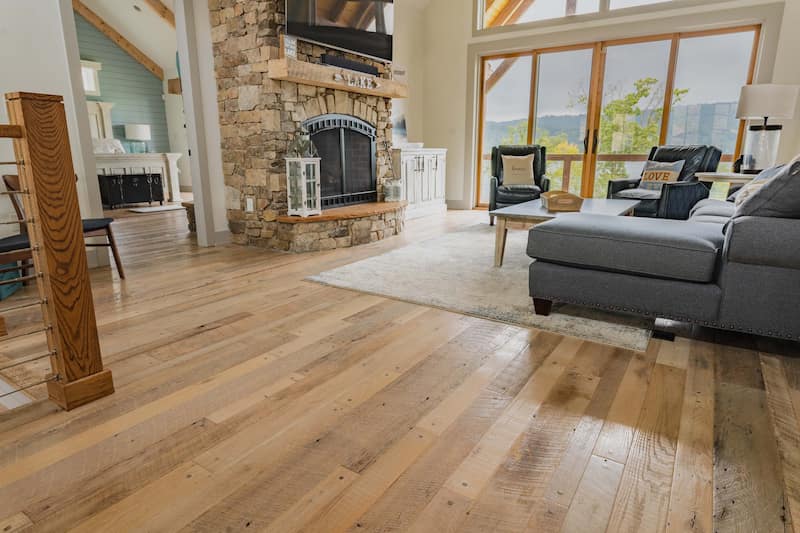
When you would prefer not to lift earthenware floors, solid laminate or wood flooring is typically out. However, before establishment, this would need a thick compressed wood sub-floor. The new floor would be overly thick due to the underlayment’s height and the 3/4-inch thickness of the actual deck. Furthermore, the difficulty involved simply isn’t worth it.
For those who want real wood but don’t want to pay the high price that comes with solid hardwood, designed hardwood is a great deck solution. Given that it has already been finished, a spotless establishment measure is possible.
It may very well be introduced over already-installed floors because it is a gliding floor, eliminating the need for potentially chaotic demo work.
If you want to install designed hardwood over tile, you must first check the condition of the tile to make sure it is level and free from breaks or damage, as these things could result in an uneven floor once the hardwood is installed.
Similar to sending the floor down, you can level it out before laying a designed wood floor on top.
New Fired Tile
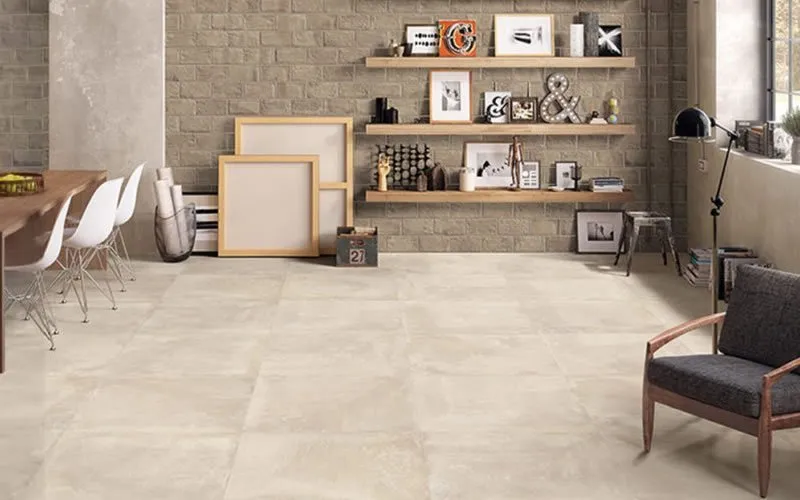
Yes, you did read that correctly. Over the highest point of the old fired deck, new ceramic tiles can be added.
An old floor should be first given a light sanding to remove the old coating and make room for the new, inferior set.
The distance between the first tile surface and entryways is one potential hindrance.
The first floor will be sufficiently level after the fix evening out. for another introduction. You might still need to change your habits to accommodate the new height.
These facilities aside, it is an easy way to get a floor with more stability and won’t need to worry about the laborious task of lifting the old ceramic floor.
The drawback is that you will have to fight against two layers of clay tile if you decide to replace the ground surface again in the future. See more about Can You Tile Over Tile?
When Do I Need to Remove Ceramic Tiles?
Your ceramic tiling may need to be completely removed under certain conditions. It might be necessary to remove all the tiles if a number of them are cracked or loose so you can inspect the subfloor to determine whether any deeper problems exist.
Mold can spread quickly and turn into a much bigger, much more expensive problem, so you should have the tile removed and check the extent of the damage if you notice any signs of water damage or mold.
Pros Of Ceramic Tiles
The material is superbly protected by a layer on top in the coated version of fired tiles. This provides stain and water obstruction. Additional resistance to high moisture conditions exists in coated tiles.
Ceramic tile is very intense. It is implied that artistic tiles are difficult to break by their incredible strength.
With ceramic tile flooring, there is nothing to worry about in terms of support. It is genuinely easy to concentrate on the fired ground top. Some routine assistance is needed, such as cleaning or vacuuming.
The ceramic deck doesn’t attract allergens like dust, dust, creature hairs, and soil because of the sturdy, hardtop. This keeps the air free of disturbing materials for those who suffer from the negative effects of hypersensitivity. Ceramic tiles offer great value for the money despite being only slightly expensive.
Suggested reading: What color grout to use with gray tile? Overall, some colored grout contrasts with gray tiles: light gray, off white, taupe, brown, charcoal gray, cream, dark gray, and gray porcelain.
Cons Of Fired Tiles
Although ceramic tile floors are sturdy and hard, they are not comfortable to step or stand on.
Sadly, ceramic flooring doesn’t actually hold heat very well. When the weather gets colder during the winter, it can be difficult to walk on.
These tiles are substantial and of a high caliber. introducing those procedures utilizing a wide range of tools, grouts, and mortars. That is why it might not be a wise choice for an establishment with an upper story.
Even though installing artistic ground top tile has a lot of benefits, there are always drawbacks, as we’ve already mentioned.
Therefore, crossing over the ceramic tiles’ highest point is typically the simplest option.
So many mortgage holders opt to cross the highest point of it with the new ground top.
The most practical ceramic tile covering, without much complaining, is provided by the alternatives below.
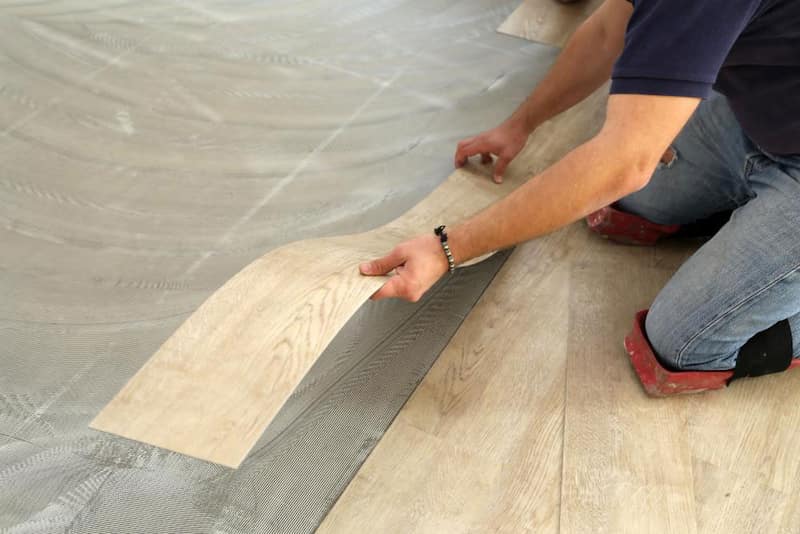
Overlay Ground Surface
Overlaying one ground surface with another raises a lot of concerns. A simple, quick ground top arrangement serves as the cover and effectively sits directly over fired tile.
It is challenging to remove decorative tile flooring. Old tiles and mortar must be chipped away, which takes a lot of time and effort. Overlay flooring is a great alternative to artistic tiles for a really straightforward introduction.
It is a small, sturdy ground top framework that doesn’t require glue and comes with a cushioned underlayment that helps smooth with trip any forms from the ceramic.
The amount of work and expense for the establishment are greatly reduced if an overlay can be placed over an artistic tile.
Thus, the overlay deck will undoubtedly be the difference-maker if you have a limited budget and a limited amount of time.
Cover The Floors
Our family room in the storm cellar was frigid and unpleasant. In order to effectively introduce plank flooring over ceramic tile, another type of ground top can be used, such as rugs. In any case, there are a few things to keep in mind.
Entryways and the overall raised appearance of the floors could be impacted by the rug’s thickness.
Additionally, all of the tack strip openings will need to be penetrated because, if you attempt to nail directly into the earthenware, it will shatter. The tack strip can also be attached with epoxy.
But it’s frequently confusing and expensive. With overlay, you gain some extra height, and the frequently discouraging situation of having your tack stripped disappeared. If you’re covering old vinyl flooring over tile, it’s a reasonable solution.
Best Type Of Glue For Flooring Installation On Ceramic Tiles
Different adhesives are required for various types of flooring. Knowing is still helpful whether or not you install the new flooring material.
A glue is not needed for carpets. However, to hold the corners or borders in place, all-purpose flooring glue is used. Additionally, it shields the ceramic tile below. The tires are thus still intact in the event that you decide to later remove the carpet.
If the ceramic tiles are even, laminate flooring can be installed without adhesives. Joints are frequently used in this type of flooring to increase stability.
On the other hand, urethane adhesive is used for hardwood flooring. Over the ceramic tile, the hardwood is permanently adhered.
You need an adhesive made specifically for cork flooring. In order to protect the delicate and sensitive cork, if you intend to use this type of flooring, have it installed by professionals.
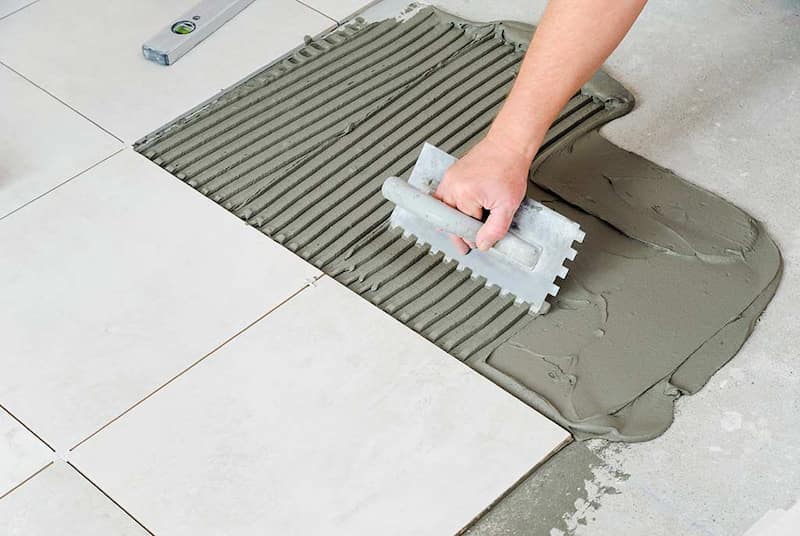
Materials For Installing Flooring Over Ceramic Tile
Depending on the kind of flooring being installed over the ceramic tile, different materials are needed. For example, “When installing click-lock laminate over tile, the only materials are the laminate itself and the underlayment,” said Flooring Masters’ proprietor, Ralph Severson.
On the other hand, “When installing vinyl over tile, if they are peel-and-stick vinyl tiles or planks, nothing else is needed,” Severson said.
Here, acrylic-based adhesives may be the best choice because they are effective and long-lasting for installing vinyl floors. You can also use polyurethane-based glues, but these are better suited for wooden floors.
Tile Vs. Carpet For Covering Ceramic Flooring
Although both carpet and tile can be put down over ceramic tiles that already exist, the procedures and results differ greatly.
“Laying tile over tile is not a very common renovation,” Fulmer said. “The majority of installers will remove the old tiles before installing the new ones because any unevenness in the old tiles can cause the new tiles to break or come loose. Additionally, rather than the smooth finish that most tiles have, the mortar used to attach the tiles to the floor is designed to stick to cement backer board.”
In contrast, covering tile with carpet is much simpler and more comfortable for your feet. Simply glue the pad to the tiles.
Tiles Vs. Hardwood For Covering Ceramic Flooring
Hardwood and tiles both make for tough flooring, resulting in a surface that is strong and long-lasting. But compared to a tile-on-tile setup, which can be difficult, hardwood tends to look better and is typically simpler to install on tiles.
The place where you’re putting in the new flooring is another distinction. As opposed to hardwood, which will absorb moisture and become soggy, tiles are excellent for wet areas like the bathroom or kitchen.
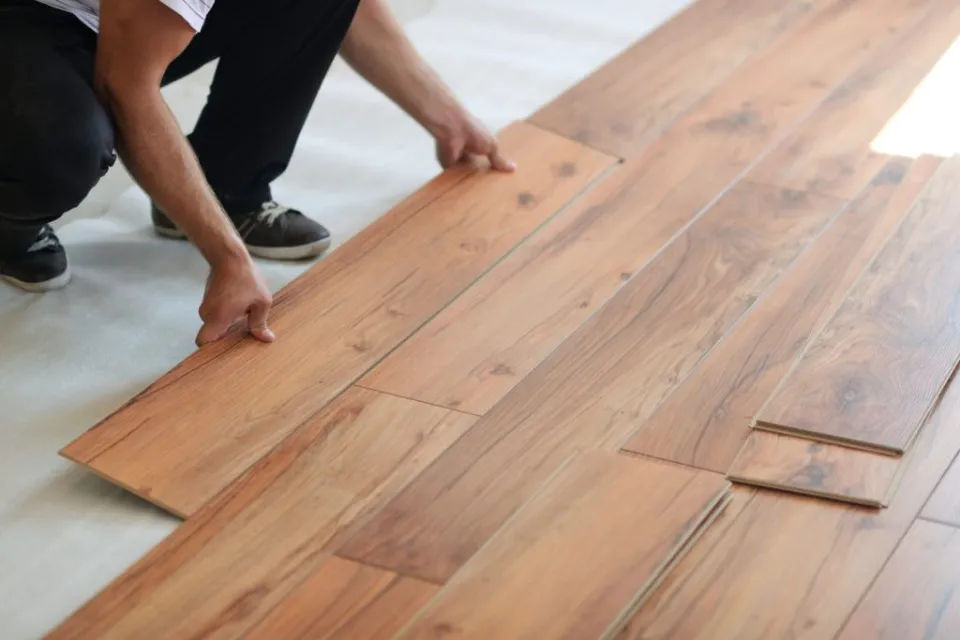
Frequently Asked Questions
Can You Put Floating Floor Over Tiles?
Should you put a floating floor over tile flooring that already exists? Once you make sure your existing floor is in good condition and level, you can carry on with the installation of a floating floor, over tile whether it’s wood, vinyl, laminate, or whatever you want.
Can You Install Engineered Hardwood over Tile?
Yes, you can lay engineered-wood or laminate flooring over tile if the tile is in decent shape. Your installation will be unsuccessful due to loose, cracked tiles. You will also raise your floor, which may interfere with doors and appliances.
Can You Put Peel And Stick Laminate Over Tile?
Most peel-and-stick tiles can be laid over existing tile and other surfaces if your existing surface is properly prepared.
Pros and Cons of Laying Vinyl Over Tile
Pros:Easy installation and maintenance; Can withstand heavy foot traffic; Durable
Cons:Labour intensive and time consuming to remove once glued down; No impact, or potentially even negative impact, on home resale value; Improper installation leads to bulging and faster wear over time
I Don’t Want To Remove My Floor Tiles, So How Can I Cover Them?
Cover the current tiles with vinyl planks, cork, carpet, or laminate flooring to save money and preserve the look. Despite the fact that some materials, like other tiles, are challenging to install over ceramic tiles, the majority of flooring types can be used to cover old tiles without removing them.
Can Ceramic Tile Be Covered With Flooring?
“There are a ton of materials that can successfully be installed on top of tile,” Jepsen said. “Determine whether each of the materials fits together properly.” For example, it is preferable to lay vinyl over tile rather than new tiles over old ceramic tiles.
Where Can I Find Inexpensive Tile Flooring Covering?
“The order of flooring types to install over tile from cheapest to most expensive is likely carpet, laminate, luxury vinyl, tile, then hardwood,” If you want to save money, Fulmer advised installing a low-cost carpet or luxury vinyl rather than paying to have the old ceramic tiles removed.
Conclusion: What Type Of Flooring Can You Put Over Ceramic Tile?
Right now, you have a ton of options. Simply select the option that works best for you. Introducing a new type of deck is a great learning experience that results in a floor that is spotless and that you can be proud of.
There won’t be many or any air pockets to worry about if you proceed cautiously and with the best of luck. You are now aware of the necessary home improvements. Your tile floors will be as good as new, regardless of whether you want to put down vinyl flooring, ceramic tile, or something else.
You now know what kind of flooring can be laid over ceramic tile. You simply need to decide which option is best for your wood flooring before considering your options.
If you have any questions, please leave a comment. Don’t forget to share the post. I appreciate your reading.
